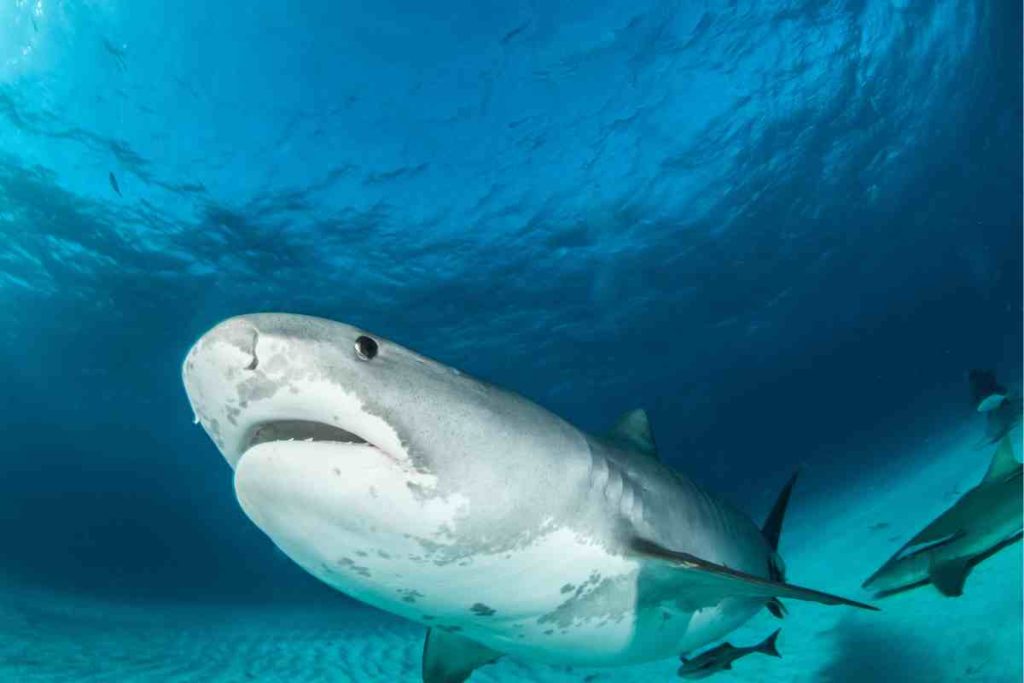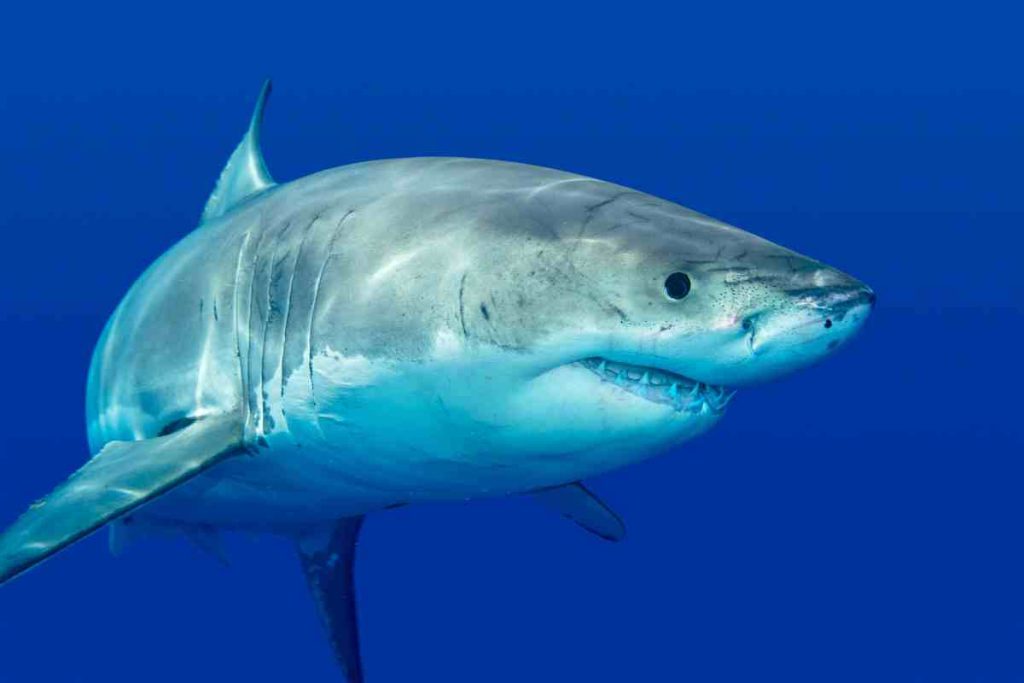A Deep Dive into the Diverse Types of Sharks
The types of sharks species is genuinely remarkable. Some sharks, like the great white, are known for their size and power, while others, like the hammerhead, have distinctive physical features that set them apart. Each species has its own set of adaptations and behaviors that make it unique.
Sharks are among the most fascinating sea creatures. They play a crucial role in maintaining the balance of marine ecosystems and are often called the “apex predators” of the ocean. With their unique characteristics and diverse species, sharks have captured the attention of scientists and nature enthusiasts alike.
There are over 500 known species of sharks, each with its unique characteristics. These creatures come in all shapes and sizes, from the mighty great white shark to the elusive goblin shark. Sharks have been around for millions of years, evolving and adapting to their environments. They are equipped with powerful jaws filled with rows of sharp teeth, making them efficient hunters.
The Mighty Great White Shark: Unraveling the Secrets of the Ocean’s Apex Predator
The great white shark is perhaps one of the ocean’s most iconic and feared creatures. Known for its size and power, this apex predator can grow up to 20 feet long and weigh over 5,000 pounds. With its sleek body and rows of sharp teeth, the great white is a formidable hunter.
Contrary to popular belief, great white sharks do not primarily hunt humans. They prefer to feed on seals, sea lions, and other marine mammals. They use a hunting technique called “breaching,” where they launch themselves out of the water to catch their prey by surprise. This behavior has been captured in numerous documentaries and has only added to the mystique surrounding these creatures.
Recent research has shed light on the behavior of great white sharks. Scientists have discovered that these sharks have complex social structures and unique behaviors. They have been observed engaging in courtship rituals, communicating through body language, and displaying playfulness. These findings challenge the common perception of great white sharks as solitary and aggressive creatures.
Hammerhead Sharks: Unique Adaptations and Social Behavior

Hammerhead sharks are known for their distinctive hammer-shaped heads, called cephalopods. This unique adaptation serves several purposes. The wide-set eyes on either side of the hammer allow for a wider field of vision, while the head’s shape helps improve maneuverability and stability in the water.
In addition to their physical adaptations, hammerhead sharks exhibit interesting social behavior. They are known to form schools or groups of hundreds or even thousands of individuals. These schools protect predators and increase the chances of successful hunting.
There are several hammerhead sharks, each with its own habitat and behavior. The scalloped hammerhead, for example, is found in coastal waters and is known for its migratory patterns. The great hammerhead, on the other hand, prefers deeper waters and has a more solitary lifestyle.
The Graceful Mako Shark: Speed Demons of the Deep
The Mako shark is often called the “cheetah of the sea” due to its incredible speed and agility. It can reach up to 45 miles per hour, making it one of the fastest-swimming sharks in the ocean. This speed allows the Mako shark to chase down its prey with ease.
Mako sharks primarily feed on fish, such as tuna and mackerel. They use their speed to their advantage when hunting, often launching themselves out of the water to catch their prey by surprise. Their sharp teeth and powerful jaws make quick work of their meals.
Despite their impressive abilities, mako sharks face numerous threats in the wild. Commercial and recreational fishing often targets them, and their populations have declined in many areas. Conservation initiatives are ongoing to protect and ensure the survival of these magnificent species.
The Elusive Goblin Shark: A Rare and Enigmatic Species

The goblin shark is one of the most mysterious and elusive shark species. It is known for its unique physical characteristics, including a long, flattened snout and protruding jaws. These features give the goblin shark a genuinely bizarre appearance.
Not much is known about the behavior and habits of goblin sharks due to their rarity and elusiveness. They are typically found in deep-sea environments, making them challenging to study. However, scientists believe that they primarily feed on small fish and crustaceans.
Research on goblin sharks is limited, but scientists continue to make discoveries about these enigmatic creatures. They are believed to have a slow growth rate and low reproductive rate, which makes them vulnerable to overfishing and other threats. More research is needed to understand the biology and ecology of goblin sharks fully.
The Majestic Whale Shark: Gentle Giants of the Sea
The whale shark is the ocean’s largest fish, reaching lengths of 40 feet or more. Despite its massive size, the whale shark is a gentle giant, feeding primarily on plankton and small fish. It has a unique feeding mechanism that involves filtering large amounts of water through its gills to capture its food.
Whale sharks are often found in warm tropical waters, where they migrate to feed and reproduce. They are known for their distinctive patterns of spots and stripes, which are unique to each individual. These patterns can be used to identify and track individual whale sharks.
Conservation efforts for whale sharks have focused on protecting their habitats and reducing threats such as bycatch and boat strikes. In some areas, ecotourism has become a popular way to observe these magnificent creatures while supporting their conservation.
Tiger Sharks: Fierce Hunters with a Varied Diet

Tiger sharks are known for their aggressive nature and powerful jaws. They are opportunistic hunters with diverse diets, including fish, seals, turtles, and garbage. Tiger sharks have been found with many unusual items in their stomachs, including license plates and tires.
These sharks can be found all around the world in tropical and subtropical waters. They are known for their distinctive markings, which resemble a tiger’s stripes. Tiger sharks are also known for their ability to migrate long distances, often traveling thousands of miles in search of food.
Despite their wide distribution, tiger sharks face numerous threats. They are often targeted by commercial fishing operations and affected by habitat destruction and pollution. Conservation efforts are underway to protect these fierce hunters and ensure their survival.
The Colorful World of Reef Sharks: Guardians of Coral Ecosystems
Reef sharks play a crucial role in maintaining the health of coral reef ecosystems. They help to control the populations of smaller fish and maintain the balance of the ecosystem. Without reef sharks, coral reefs can become overpopulated with herbivorous fish, leading to declining coral populations.
There are several species of reef sharks, each with its unique characteristics. The blacktip reef shark is one of the most common species found on coral reefs. It is known for its distinctive black-tipped fins and can often be seen swimming near the surface.
Unfortunately, reef sharks face numerous threats, including overfishing and habitat destruction. They are often targeted for their fins used in shark fin soup. Conservation efforts are underway to protect these crucial guardians of coral ecosystems.
The Agile Blue Shark: Masters of Long-Distance Migration

The blue shark is known for its sleek and streamlined body, which allows it to swim quickly through the water. It is one of the most widespread shark species in tropical and temperate waters worldwide. Blue sharks are known for their long-distance migrations, often traveling thousands of miles for food.
Blue sharks feed on fish and squid, using their sharp teeth to capture prey. They are also known to scavenge on the carcasses of dead animals. Blue sharks face numerous threats from commercial fishing operations despite their large populations. They are often caught as bycatch and are also targeted for their fins.
Conservation efforts for blue sharks focus on reducing bycatch and protecting their habitats. These efforts are crucial for maintaining marine ecosystems’ health and ensuring these agile predators’ survival.
Lesser-Known Sharks: From the Wobbegong to the Cookie-cutter
While great white and hammerhead sharks may be the most well-known species, many lesser-known sharks are equally fascinating. One example is the wobbegong shark, known for its unique appearance and behavior. Wobbegong sharks have flattened bodies and patterned skin that allows them to blend in with their surroundings. They are ambush predators, waiting for their prey to come close before striking.
Another lesser-known species is the cookie-cutter shark. This small shark has a unique feeding behavior, using its specialized teeth to take circular bites out of larger animals, such as whales and dolphins. These bites leave distinctive scars on the bodies of their prey.
Studying and protecting all shark species is vital for maintaining the health of marine ecosystems. Each species plays a unique role in the balance of the ocean, and their conservation is crucial for the overall health of our planet.
Conclusion
Sharks are truly fascinating creatures that play a vital role in maintaining the balance of marine ecosystems. Each species has unique characteristics and behaviors, from the mighty great white shark to the elusive goblin shark. Understanding and conserving sharks is crucial for the health of the oceans and the overall balance of marine ecosystems.
Through research and conservation efforts, scientists are uncovering the secrets of these incredible creatures. They are discovering new behaviors, debunking myths, and shedding light on the importance of sharks in maintaining healthy marine ecosystems.
As individuals, we can contribute to shark conservation by supporting organizations protecting these creatures and their habitats. By learning more about sharks and spreading awareness, we can help ensure their survival for future generations.
More Sources: The Evolution of the Turtle Shells

